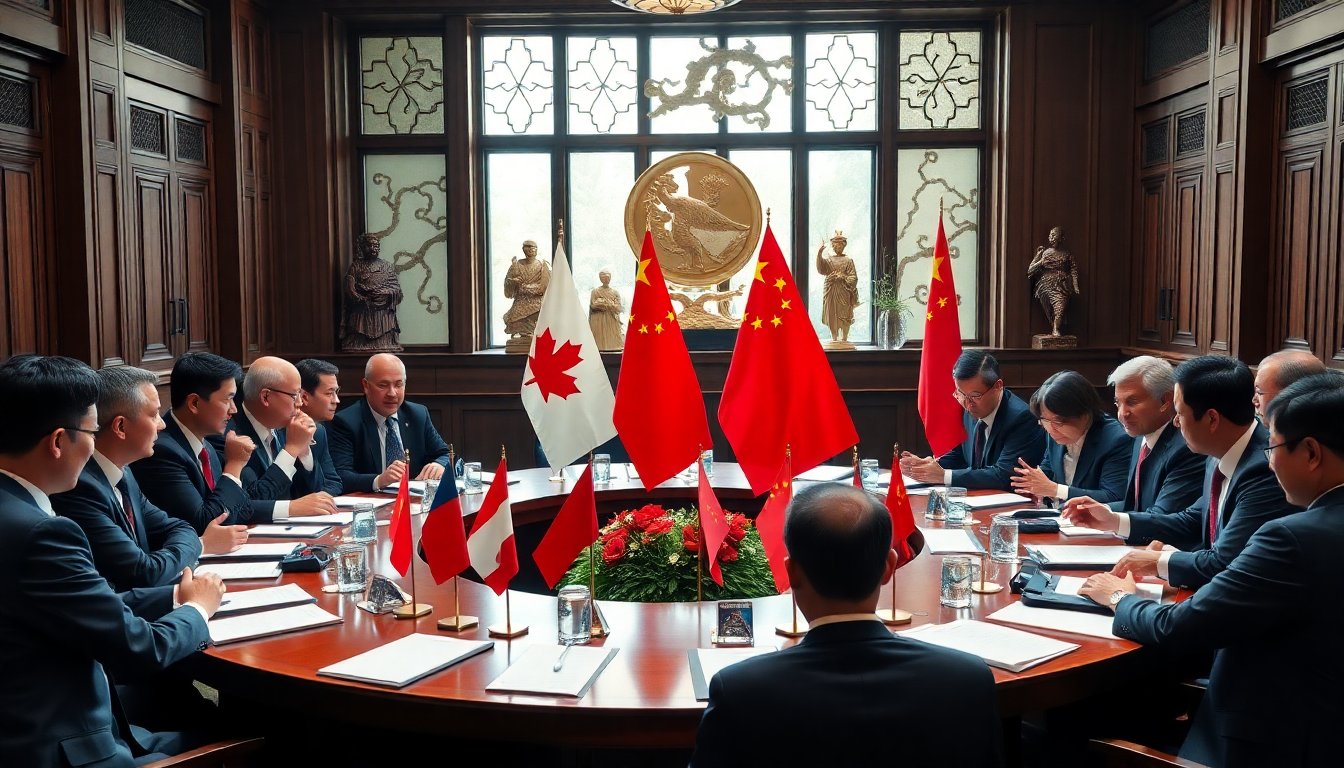Table of Contents
In a significant diplomatic development, Canadian Prime Minister Mark Carney and Chinese President Xi Jinping engaged in discussions on the sidelines of the Asia-Pacific Economic Cooperation (APEC) summit. This meeting marks the first direct engagement between the leaders of these two nations since 2017, setting the stage for what both parties hope will be a constructive dialogue aimed at mending their historically strained relationship.
During the brief opening remarks, President Xi emphasized the long-standing cooperation between Canada and China, expressing a desire to rekindle that partnership. He extended an invitation for Carney to visit China, a gesture that signifies a willingness to move forward and address ongoing tensions.
Understanding the context of the bilateral meeting
The backdrop to this meeting is complex, as relations between Canada and China have soured significantly since 2018. The catalyst for this deterioration was the arrest of Meng Wanzhou, a senior executive of the Chinese technology company Huawei, in Vancouver.
This incident led to retaliatory actions from Beijing, including the detention of two Canadian citizens, which heightened tensions considerably.
As Carney noted, the distance created by these events is not conducive to resolving issues. “Distance is not the way to solve problems, not the way to serve our people,” he stated, indicating the need for a new approach.
The Prime Minister characterized the recent talks as a long-overdue opportunity to create pathways for Canadian families and businesses.
Trade discussions and economic implications
Both leaders recognized the pressing need to address outstanding trade issues. A statement from Carney’s office revealed that they tasked officials from both sides with swiftly resolving significant trade irritants.
Topics of discussion included Canadian exports such as canola, pork, and minerals, which have faced trade barriers in recent years.
Canada’s agricultural exports, particularly canola, have been under scrutiny, leading to accusations that Beijing has leveraged trade as a political strategy.
Furthermore, this meeting aims to explore solutions regarding sensitive issues that have plagued the bilateral relationship, such as the trade of electric vehicles (EVs) and seafood.
Looking ahead: Opportunities and challenges
The recent dialogue initiates a potential turning point for Canada-China relations. Carney expressed optimism, stating, “This meeting today is long overdue,” and highlighting the opportunities it could create. However, experts urge caution. Vina Nadjibulla from the Asia Pacific Foundation of Canada pointed out that while the tone of discussions has shifted, the fundamental issues remain unresolved.
Global context and strategic considerations
Amidst a changing global landscape, external factors also influence this thaw in relations. The deterioration of Canada’s relationship with the United States has provided a unique context for renewed discussions with China. Observers note that as the U.S. and China navigate their own trade tensions, Canada must carefully consider its position and approach in this evolving environment.
Carney’s recent remarks at a business event highlighted Canada’s intention to diversify its trade partnerships beyond the U.S., signaling a strategic shift. However, experts caution against over-reliance on China as a solution to U.S. trade issues, advocating for a balanced approach that mitigates vulnerabilities associated with dependence on both nations.
The road ahead for Canada and China is fraught with challenges, yet the recent meeting represents a constructive step forward. Both leaders have acknowledged the need for cooperation and dialogue, emphasizing the importance of addressing shared interests while remaining vigilant about potential risks.





